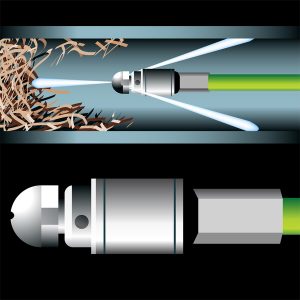 Nobody likes drain clogs in their home. They’re a nuisance. Sometimes a plunger or a hand-cranked drain snake can fix them. At other times, they’ll need a professional plumber for drain cleaning services to eliminate.
Nobody likes drain clogs in their home. They’re a nuisance. Sometimes a plunger or a hand-cranked drain snake can fix them. At other times, they’ll need a professional plumber for drain cleaning services to eliminate.
You can prevent the majority of drain clogs in your house with some prevention techniques. In this post, we’re going to look at ways to keep out hair from the drains in your bathroom. Hair clogs are among the most common and insidious, since it’s easy for clumps to collect in the p-trap (the curved pipe section) under the drain. However, a bit of caution goes a long way toward fixing this.

 No problem in a home’s plumbing is “pleasant.” But it’s not an exaggeration to say that a backed-up sewer line is among the most “unpleasant” problems for a household. We sincerely hope you never have to deal with a plumbing issue this severe—but we’re also glad to be the ones to help you out with
No problem in a home’s plumbing is “pleasant.” But it’s not an exaggeration to say that a backed-up sewer line is among the most “unpleasant” problems for a household. We sincerely hope you never have to deal with a plumbing issue this severe—but we’re also glad to be the ones to help you out with  Corrosion: the gradual destruction of metal due to a chemical or electro-chemical reaction to the environment. Or, to look at a case you’re probably more familiar with, metal that rusts because of the presence of water. There are different types of corrosion, but when we’re talking about a residential water heater, it’s the corrosion that occurs because of the mix of oxygen and water in contact with metal.
Corrosion: the gradual destruction of metal due to a chemical or electro-chemical reaction to the environment. Or, to look at a case you’re probably more familiar with, metal that rusts because of the presence of water. There are different types of corrosion, but when we’re talking about a residential water heater, it’s the corrosion that occurs because of the mix of oxygen and water in contact with metal. Hard water is one of the most common types of water quality issues homes encounter. No matter how well water is purified at a water treatment plant, hard water minerals (magnesium and calcium) can seep through ground water and into the municipal pipes carrying the freshwater to homes.
Hard water is one of the most common types of water quality issues homes encounter. No matter how well water is purified at a water treatment plant, hard water minerals (magnesium and calcium) can seep through ground water and into the municipal pipes carrying the freshwater to homes. We take pride in keeping current with the best plumbing technology available today, both to serve
We take pride in keeping current with the best plumbing technology available today, both to serve  You never want to get caught without hot water for your home. It can mean going without showers and baths, and it also will bring a halt to a number of basic, everyday chores. In fact, you’ll never realize just how much you rely on your water heater through the average day… until you suddenly don’t have a working water heater!
You never want to get caught without hot water for your home. It can mean going without showers and baths, and it also will bring a halt to a number of basic, everyday chores. In fact, you’ll never realize just how much you rely on your water heater through the average day… until you suddenly don’t have a working water heater! The sewer line that runs from your house to the municipal system in the street, or to a septic tank if your house is unconnected to the municipal line, is buried out of sight—and that’s the way we’re sure you want it. But this means it’s difficult to access or to observe when the sewer line starts leaking or suffers from tree root infestation.
The sewer line that runs from your house to the municipal system in the street, or to a septic tank if your house is unconnected to the municipal line, is buried out of sight—and that’s the way we’re sure you want it. But this means it’s difficult to access or to observe when the sewer line starts leaking or suffers from tree root infestation.